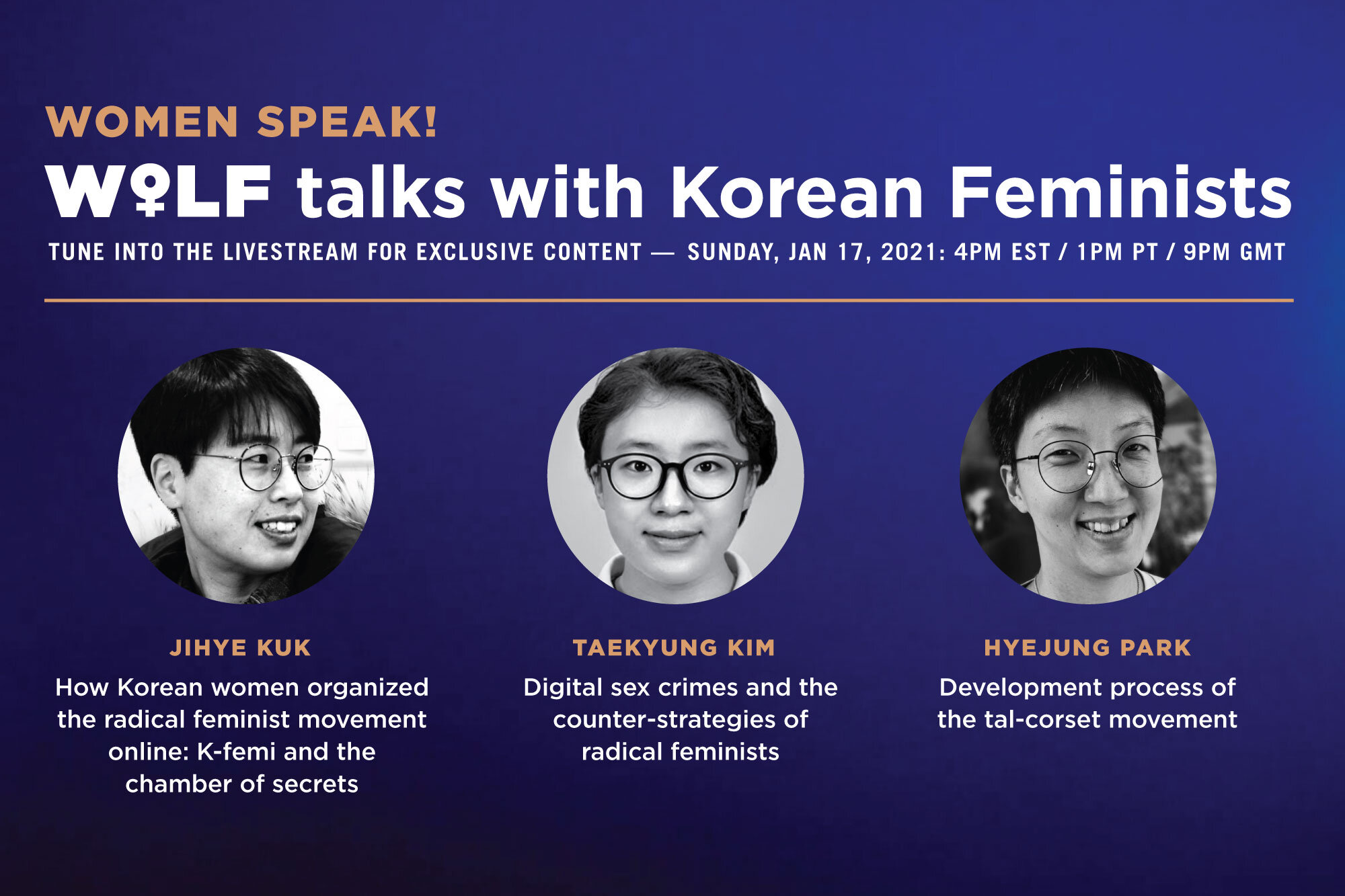Pornography in South Korea: digital sexual exploitation
Sign up on Eventbrite to hear Korean radical feminists speak about feminist organizing in South Korea.
By Taekyung Kim
First of all, in theory, the majority of pornography is illegal in South Korea. What we call illegal pornography includes pornography taken without the victim's consent, pornography taken against the victim's will (revenge porn included here), pornography featuring minors, and commercial pornography overseas. In addition, if a character is recognized as a minor in printed sexual material (like a manga), it is also considered illegal.
In other words, the production, distribution, and sale of obscene materials are rarely allowed in Korea legally. Also, foreign pornographic sites, like Pornhub, are blocked by the government.
However, a survey of 260 people online in 2018 found that 100 percent of men said they saw porn. Also, there are none of my male acquaintances who didn't watch porn. Despite strong regulations on this, I will explain why people (men) watch a lot of porn.
First of all, the definition of obscene materials (“obscene material” is a phrase which we use more often than pornography in South Korea) given at the national level is very vague. That is, because there is no exact definition of this, whether the sexual exploitation is a 'real' sexual exploitation must depend on the decision and judgment of the judge, regardless of the victim's intention or condition.
In other words, I can say this: in South Korea, sexual exploitation, which is not classified as pornography, exists everywhere in invisible places.
Men make sexual exploitation videos by exploiting the vague definition of pornography. For example, they secretly film parts of a woman's body. When the woman notices the fact and reports it, most "male" judges "judge" that the body part is not sexually obscene and acquit the perpetrator. The photos or videos taken are uploaded somewhere on the Internet, and remain forever.
Or the perpetrators compel the victim into ongoing ‘sex slavery,’ especially young minors or young women, by seizing on their personal information or a family weakness to keep them from reporting a crime to the authorities. The young victims are even forced to take videos of themselves sexually touching their bodies in public places or in front of family. Most of the victims are classmates of the perpetrators, or young students who are financially vulnerable.
The online platforms that Korean men use a lot are P2P sites or Webhard, since permanent deletion of photos and videos uploaded to such sites is practically impossible. As the management of such sites is also male, they make financial demands on the victim's request for deletion, but may only pretend that the video has been deleted.
Men may also build websites based on overseas servers, build a so-called ‘dark web,’ or use overseas-based SNS such as Telegram to produce, distribute and sell sexual artifacts in Korea that are difficult to trace.
What's more horrific is that more sadistic acts are shared in places like this. Recently, even a six-month-old girl was found to have been a victim of sexual exploitation on a dark web site run by Son Jung-woo.
To hear more about how Korean women are fighting back, tune in for our webinar, January 17, 2020, at 4PM ET/1PM PT/9PM GMT: Women Speak! WoLF talks with Korean feminists.
Taekyung Kim, Jihye Kuk, and Hyejung Park will be joining WoLF to talk about their fight against digital sexual exploitation and harmful beauty practices. There will be exclusive content on the livestream, and we’ll update this page with video of the event within a week of the presentation.

